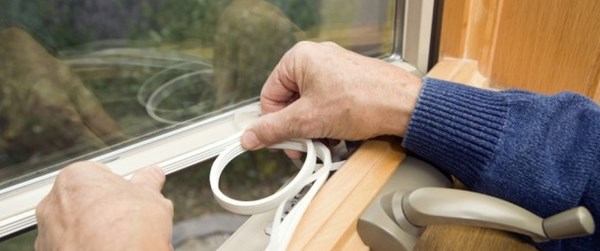TORONTO, Nov. 18, 2013 (GLOBE NEWSWIRE) -- Heating and cooling account for 64 per cent of energy used in the average Canadian home, according to Natural Resources Canada. Unfortunately, much of that energy is wasted due to inefficient heating and cooling systems, bad habits and poor insulation. And wasted energy leads to wasted money on your home energy bills.
The good news is that spending a little time on a few simple DIY projects can help make your home more energy efficient, reduce your environmental footprint, and trim your energy bills. Insulation products made with various plastics help improve energy efficiency—in fact, a little bit of plastics can save quite a bit of energy over the life of your home.
More efficient windows: Old, outdated windows are among the biggest energy wasters. New windows with snug-fitting vinyl plastic frames and insulating panes can go a long way toward improving your home's energy efficiency. The vinyl plastic frames are durable and resistant to both moisture and humidity, and many are filled with foam plastic insulation to further improve energy efficiency. And they don't need painting. With the right tools and a little savvy, you can install new vinyl windows yourself—or call in the pros.
You also can modify your existing windows with energy saving plastic window film. The film works by slowing heat transfer. Easy to install, this transparent, flexible plastic film is applied to the window pane in a snap. Some films even offer UV protection that help prevent fading and discoloration of furniture, carpeting, and curtains from the harsh sun.
Seal out drafts: Opening a door can mean a big rush of air. But what about a closed door? No big rush of air there, but closed doors can leak air, more than you may think. Plastic-based caulks from your local hardware store or retailer can help. For example, silicone plastic caulk is long-lasting and stands up to temperature extremes, both summer and winter. It's great around doorframes, window frames, and any other areas where you can feel drafts. Get the best seal by applying the caulk smoothly and evenly with a caulking gun. (Homebuilders sometimes forget to caulk the top or bottom of window frames, so check your home to see for yourself.)
Insulate switches and outlets: You might not think wall switches and outlets have anything to do with your home's energy efficiency, but all those small holes can waste a lot of energy. Sealing the holes can help, and there are a variety of outlet and switch plate seals, made with foam plastic, available to do the job. They're easy to install: just unscrew the cover plate, place the seal inside, and replace the cover plate.
Although some of these changes are small, remember that small actions can lead to big results. These steps can appreciably reduce your home's energy use, so you can save more money and waste less energy year-round.
Today's intelligent plastics are vital to the modern world. These materials enhance our lifestyles, our economy and the environment. For more information visit www.intelligentplastics.ca.
A photo accompanying this release is available at:
http://www.globenewswire.com/newsroom/prs/?pkgid=22283
